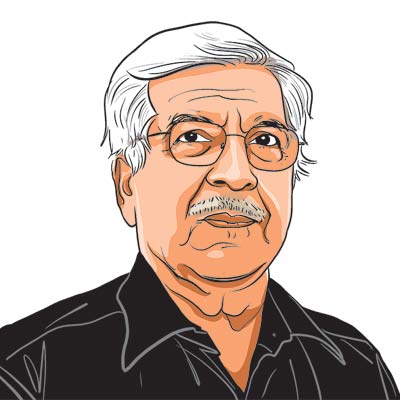Opinion Kalighat Memories
It is only when the election results were being declared that I discovered that Mamata Didi is a denizen of Kalighat.
It is only when the election results were being declared that I discovered that Mamata Didi is a denizen of Kalighat. I grew up there from 1941 to 1944 and again from 1947 to 1949. This may have been before Didi was born. I thought I would check from the Internet but gave it up since I belong to a generation which does not find out the age of ladies. My memories of Kalighat are from 1943 onwards since before then I was also too small to remember. We lived opposite Kalighat Park next to the tram depot,first in a bari in 19 Russa Road and then a bigger place in 21 Russa Road. The earlier memories are of the imperial period; first of Japanese bombers,clearly visible from our house after the,frightening to a child and perhaps others,siren of expected bombing. Later the local boys would fight the police in the Quit India agitations. They would shout slogans and some also throw stones at the police on Russa Road and then melt into the bylanes of Kalighat. I remember an English police officer walking menacingly into the sidelane of 19 Russa Road,revolver drawn and my mother pulling me away from our rear window not wanting her son to stop an accidental bullet. Later there was the great procession of the INA led by Shah Nawaz Khan and it took four hours to cross our window and my uncle told me that this was bigger than the year Mohan Bagan beat the first British team in the IFA final and on that occasion apparently the mythology was that when the head of the procession with the trophy ad reached Kali Bari,the tail was still in Chowringhee. There was then the exhilaration of 15 August 1947 when we went wild and the tricolor was every where. There were also celeberating trucks with joint Muslim League and tricolor or Forward Bloc and Tricolour flags intertwined. Then in 1948 there was the great election where Sarat Chandra Bose fought from the hospital,I think on a Forward Bloc ticket and won. Kalighat is very Bengali and also cosmopolitan.The Jat Sardars who ran Calcuttas buses before nationalization in the fifties had Kalighat as their center. My grandfather was a small bus owner and they elected him as their President. He was educated and they were not and he would fight their battles with the monopoly bus seller and financier and I remember all my friends agog because they would not take bus fares from me as we went to school in Park Street. But their boisterous life was a part of the melee of Kalighat.
Mamata Banerjee is in a sense quite right in saying that Kolkata and Bengal lives history. In later trips in Bengal,where I had my first job after my degree at the University of Pennsylvania and of course with a Wharton button I joined the Indian Institute of Management Calcutta and lived in North Kolkata,but I would always at any excuse,the Durga Puja,to go back at the Kali bari temple and reminisce of the trips with my mother,to eat luchis and cholayer dal in Bhowanipur, to eat chaps at my favorite Sangu Valley Restaurant in Hazra Road ,or to eat rotis ,kali dal and mutton curry at Lakhe da Dhabbha where the Jat bus drivers,conductors and saicees would congregate,go back to South Kolkata. There is in the local there,an excitement and a tension and it is not surprising it spills over to the national and the global,in 1944,1947,1968 and now again in 2011.




